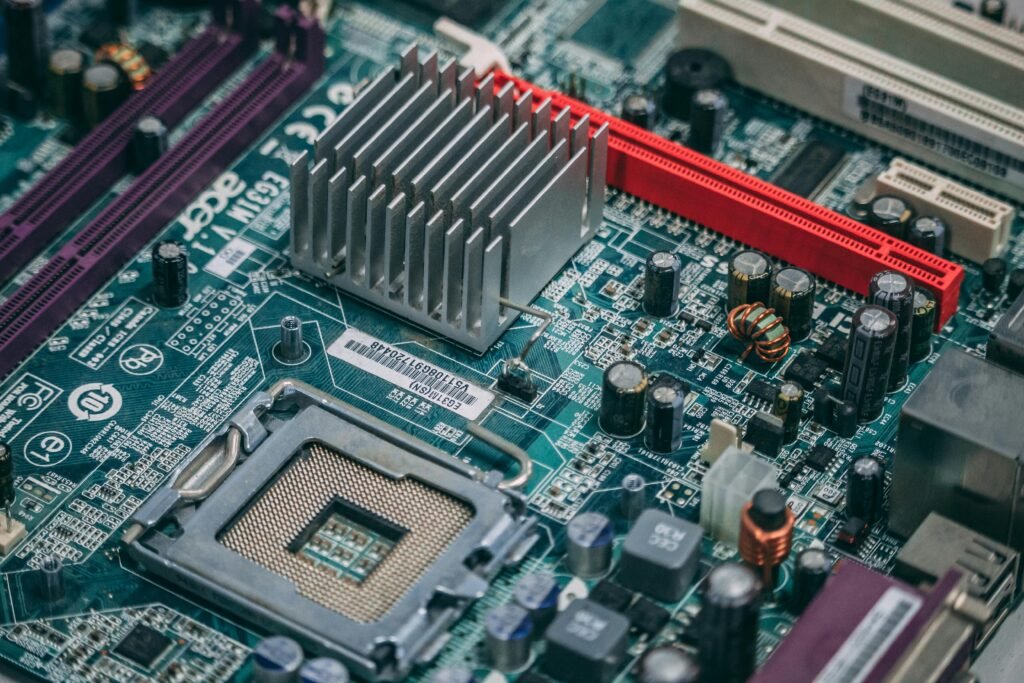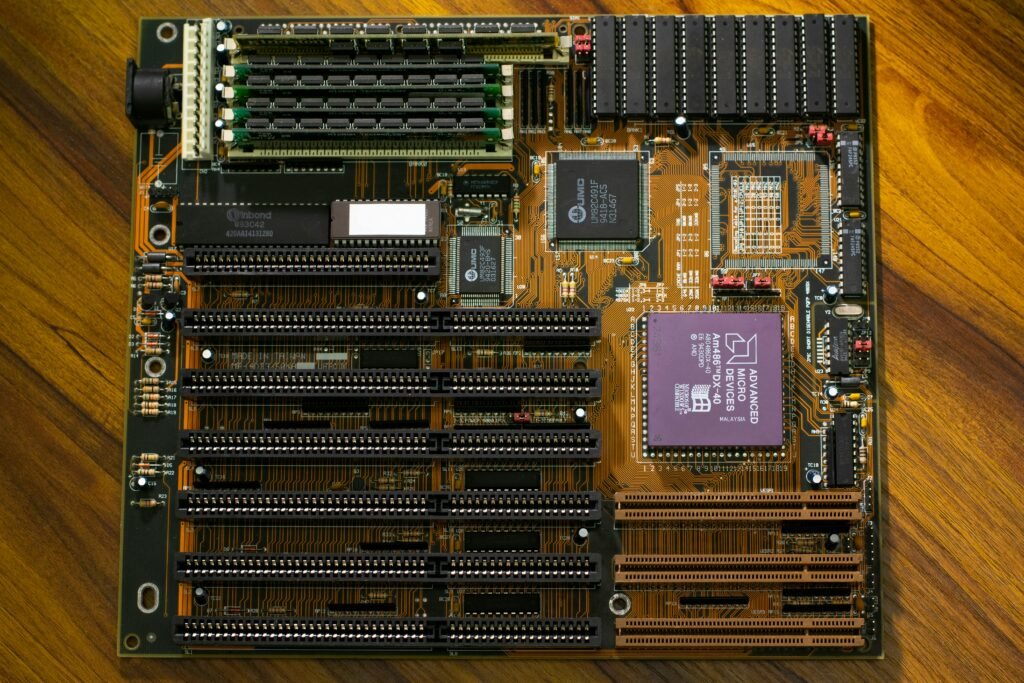In this fast-paced technology evolution, business organizations cutting across various industries have been working tirelessly to extend efforts and respond to the challenges and opportunities presented by big data. In this regard, as companies rely increasingly on data for decision-making, making better operational outputs and finding valuable insights, the importance of memory chipsets in business data analytics has increased exponentially. Memory chipsets, which were earlier simple hardware units, are today the foundation stones of modern data analytics systems that enable businesses to process a huge amount of data in real-time with an efficiency and effectiveness that’s spotless.
In this blog, we’ll take a closer look at the growing role of memory chipsets in business data analytics—from their importance to how they facilitate data-driven decision-making—and why companies, especially in B2B, need to make investments in cutting-edge memory technologies that keep them one step ahead of the competition.

Understanding Memory Chipsets and Their Role in Data Analytics
Gaining a proper understanding of what memory chipsets are and how they work assembles a necessity to explore all the details of how memory chipsets affect data analytics. A memory chipset includes integrated circuits that enable a computer or server to hold and access data at high-speed proficiency. They are exceedingly crucial in the potential for accomplishing computations over big data because they define how fast one can process, access, or analyze data.
In a data analytics environment, such environments continuously ingest humongous amounts of data, such as from IoT devices, transactional systems, customer interactions, and many more. For real-time analytics where insights can be derived from data almost instantaneously, efficiently storing and retrieving such data in memory is critical.
Key Drivers Behind the Growing Demand for Memory Chipsets in Business Data Analytics
There are many reasons why memory chipsets are gaining importance in the world of business data analytics. As a business is trying to exploit the power of big data, memory chipsets have become an integral part of the process. Let’s explore some of the drivers behind this turn of events:
1. The Explosion of Data Volumes
The data generated across the globe is increasing exponentially. According to an IDC report, the global datasphere will reach 175 zettabytes by 2025. Huge amounts of data call for faster and more efficient ways of processing and analyzing this information. Memory chipsets play a very critical role in ensuring that businesses can process big-scale data analytics without delays or system bottlenecking.
2. Real-Time Decision Making
Real-time decision-making is a new kind of competitive advantage in the modern business environment. Organizations need actions that are taken in real-time, based on up-to-date information, to seize the market opportunity, maximize the optimization of operations, and meet the needs of customers. Such memory chipsets help in the fast processing of data, so businesses can do analytics at the moment and make decisions on time according to data.
3. Emergence of Artificial Intelligence and Machine Learning
Because AI and ML algorithms require large computational systems to process high volumes of data with precision, business operations heavily depend on memory chipsets to support the computing system from the tremendous volumes of data applied during the training of the model and predictions. The unprecedented rise in demand for high-performance memory technology came from business operations when AI and ML were integrated into their overall operations.
4. The Evolution Towards Cloud-Based Analytics
Cloud computing is making the entire venture of different changes possible in dealing with data analytics. Clouds offer flexible and scalable solutions for storing, processing, and analyzing data. For businesses to be able to take full leverage from cloud-based analytics, there is a need for strong memory chip sets that can reap the benefits from the demands of the cloud infrastructure while facilitating smooth data processing and efficient data retrieval across distributed environments.
5. Increased Focus on Data Security
Against the backdrop of increasing data volume and the sensitivity of the information being collected and stored by businesses, there is a higher focus on data security. Memory chipsets safeguard business-critical data by implementing encryption and secure data storage solutions. Thus, it is through the implementation of robust memory technologies for business analytics systems that cyber threats such as hacking will be warded off while adhering to data protection regulations, for example, GDPR.

The Role of Memory Chipsets in Data Analytics Performance Improvement
Now that we’ve enumerated some of the critical factors for demand in memory chipsets for data analytics, let’s now delve deeper into how memory technologies enhance data analytics systems performance:
1. Increased data access and processing speed
Among the most important aspects of data analytics is how quickly one can access and process data. Memory chipsets enable a business to store and retrieve its data at amazingly high speeds, lessening latency within a typical analytics system and improving the overall performance of the system. Or, in other words, if businesses can access data more efficiently, they will become able to take care of sophisticated analytics jobs such as querying huge datasets, reporting, predictive analytics, and much more in the most efficient way possible.
2. Data Processing for Complex Algorithms
In most instances, data analytics involves running complex algorithms, particularly when it comes to running predictive modelling, machine learning, and AI. Memory chipsets therefore provide the necessary bandwidth and capacity for such complex algorithms so that advanced analytics models can run without being a performance hit. This is a very important support for many businesses, especially those in the finance, healthcare, and manufacturing industries, which often engage with the use of sophisticated algorithms to make actionable insights from large volumes of data.
3. Scalable infrastructure of Big Data
In building scalable infrastructure for data analytics, companies scale and deal with more significant datasets. Modern memory technologies such as solid-state drives (SSDs) and high-bandwidth memory (HBM) provide business flexibility in scaling its storage and processing capability based on growing demands for data. Scalability is important to organizations dealing with constantly expanding data sources and having to adjust their infrastructure accordingly.
4. Improved Cost-Effectiveness
High-performance memory systems are seen as a costly investment for businesses. However, because of the advancements in memory technology and prices going down, high-performance memory chipsets are now within the reach of businesses. Improved performance in memory reduces the total cost associated with data analytics, making the analytics process quite affordable to businesses of all sizes.
5. Improved Multi-tasking and Parallel Processing
Modern data analytics tends to run many processes concurrently; these include, but are not limited to, data cleaning, transformation, and analysis. Memory chipsets that can support multitasking and parallel processing allow businesses to handle such processes concurrently, which improves the overall speed and efficiency of a workflow during data analytics. Such capability is important for large enterprises and B2B organizations to process complex datasets coming from multiple sources.
Important Memory Technologies: Defining the Future of Data Analytics
Various memory technologies are underway to form the future of business data analytics. Some of them would be regarded as substantial from the business investment in data analytics infrastructure. Such memory technologies include:
1. High-Bandwidth Memory (HBM)
High-bandwidth memory is a next-generation memory technology intended to offer exceptionally high data transfer rates and, therefore, best suited for applications with great data intensity, such as real-time machine learning and analytics. HBM allows businesses to process big volumes of data much more speedily with significantly reduced bottlenecks and systems that perform better.
2. Non-volatile memory (NVM)
Non-volatile memory (NVM): This is the other memory technology in data analytics. It is the technology that does not lose data even if there is a loss of power; it retains data even if there is an occurrence of power loss. Therefore, NVM will be so appropriate for any applications requiring high availability and reliability, such as those business-critical data analytics systems.
3. SSDs
SSDs have become the go-to storage solution of choice for businesses trying to enhance their data analytics capabilities. They achieve read and write speeds that are up to an order of magnitude faster than traditional HDDs, which will help improve the speed at which data can be retrieved and the overall performance of any data analytics applications.
4. DRAM and Persistent Memory
Although DRAM is still an essential aspect of the core of business data analytics, providing very fast access to data that resides in memory, innovation comes in the form of persistent memory, which offers benefits from DRAM and non-volatile, too. Hybrid solutions preserve the data through power failures and provide faster processing, which is a boon for businesses.
Conclusion: Why Businesses Should Care about Memory Chipsets About Data Analytics
The growing reliance on data analytics to make business decisions brought memory chipsets into the heart of modern infrastructures of businesses. With the growing volumes of data and the need for faster and more effective data processing by organizations, memory chipsets will be crucial in helping businesses achieve their data-driven goals.
For B2B companies, to keep up with the competition in the race for the data analytics space, investment in the latest memory technologies will be imperative. With proper in-memory infrastructure—one that’s capable of handling demanding big data, near real-time analytics, and advanced machine-learning models businesses unlock new insights, boost operational efficiencies, and make better decisions.
Looking forward, memory chipsets are going to become even more crucial in business data analytics. For this reason, companies that integrate high-performance memory technologies into their data analytics strategies will be better positioned to survive the data-driven world of tomorrow.
About The Author
Elena Tang
Hi, I’m Elena Tang, founder of ESPCBA. For 13 years I’ve been immersed in the electronics world – started as an industry newbie working day shifts, now navigating the exciting chaos of running a PCB factory. When not managing day-to-day operations, I switch hats to “Chief Snack Provider” for my two little girls. Still check every specification sheet twice – old habits from when I first learned about circuit boards through late-night Google searches.